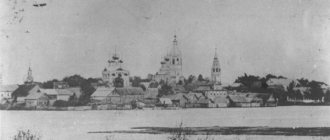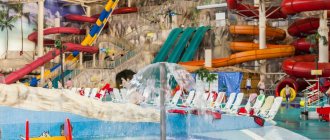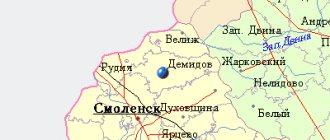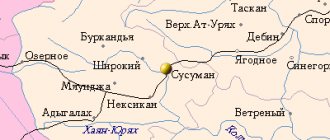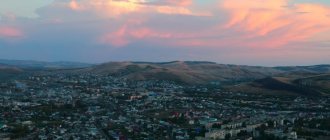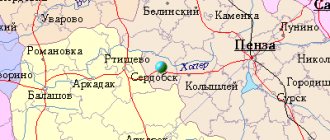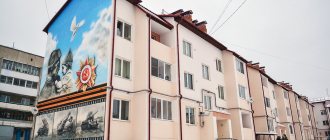City in Tver region, Russia
| Ostashkov Ostashkov | |
| Town[1] | |
| Flag Coat of arms | |
| Location of Ostashkov | |
| Ostashkov Location of Ostashkov Show map of Russia Ostashkov Ostashkov (Tver region) Show map of Tver region | |
| Coordinates: 57°09′N 33°06′E / 57.150°N W. 33.100 ° E. / 57.150; 33.100Coordinates: 57°09′N 33°06′E / 57.150°N W. 33.100 ° E. / 57.150; 33.100 | |
| A country | Russia |
| Federal subject | Tver region[1] |
| Administrative region | Ostashkovsky district[2] |
| urban village | Ostashkov[2] |
| Based | 1770 |
| City status from | 1770 |
| Height | 210 m (690 ft) |
| Population (2010 Census)[3] | |
| • Total | 18,088 |
| Administrative status | |
| • Capital from | Ostashkovsky district[4], Ostashkov village[2] |
| Municipal status | |
| • Municipal district | Ostashkovsky municipal district[5] |
| • Urban village | Urban settlement Ostashkov[5] |
| • Capital from | Ostashkovsky municipal district[6], Ostashkov urban-type settlement[5] |
| Timezone | UTC + 3 (MSK [7]) |
| Postal code(s)[8] | 172730, 172734, 172735, 172749 |
| OKTMO I WOULD | 28645101001 |
Ostashkov
(Russian: Ostаshkov) is a town and the administrative center of Ostashkovsky District in Tver Oblast, Russia, on a peninsula on the southern shore of Lake Seliger, 199 kilometers (124 mi) west of Tver, the administrative center of the region. Population: 18,088 (2010 Census);[3]20,660 (2002 Census);[9]27,401 (1989 Census).[10]
General information and history of Ostashkov
The city is located on the shore of the southern part of Lake Seliger, 190 km from Tver. The population of the city as of January 1, 2014 is 17,109.
Ostashkov from a bird's eye view
The first mention of the city dates back to 1371, then Ostashkov’s predecessor was the fortified town of Klichen, located on the island of the same name. At the end of the 14th century, Klichen was ravaged by the Novgorodians and, as legend says, the few surviving inhabitants, among whom were the fishermen Eustathius (in common parlance Evstashka, hence Ostashko) and Timofey, moved from the island to the mainland and founded a settlement.
On May 28, 1770, according to the decree of Empress Catherine II, Ostashkov officially received the status of a city (in memory of this, City Day has been celebrated in Ostashkov on the last Sunday of May since 1987).
In 1929-1935 Ostashkov was part of the Western Region, from 1935 to 1990 - the Kalinin Region.
References
Notes
- ^ a b
Law No. 34-ZO. - ^ a b c d
Law No. 34-ZO provides that the boundaries of settlements (administrative territorial units) are identical to the boundaries of urban and rural settlements (municipalities), and the boundaries of administrative districts are identical to the boundaries of municipalities. areas. In Law No. 40-ZO, which defines the boundaries and composition of the municipalities of the Ostashkovsky municipal district, the city of Ostashkov is included in the composition and administrative center of the Ostashkovsky urban settlement of this region. - ^ a b
Federal State Statistics Service of Russia (2011).
“All-Russian Population Census 2010. Volume 1" [All-Russian Population Census 2010, vol. 1]. All-Russian Population Census 2010 [All-Russian Population Census 2010]
(in Russian). Federal State Statistics Service. - ^ a b
State Committee of the Russian Federation on Statistics.
Committee of the Russian Federation for Standardization, Metrology and Certification. No. OK 019-95 January 1, 1997 “All-Russian classifier of objects of administrative-territorial division. Code 28 245”, Ed. changes No. 278 / 2015 dated January 1, 2016. (State Committee of the Russian Federation on Statistics. Committee of the Russian Federation on Standardization, Metrology and Certification. No. OK 019-95 January 1, 1997 Russian Classification of Administrative Objects (OKATO). Code 28 245
As amended by Amendment No. 278/2015 dated January 1, 2016). - ^ a b c d
Law No. 40-ZO. - Law No. 4-ZO.
- "On the calculation of time." Official Internet portal of legal information
(in Russian). June 3, 2011. Retrieved January 19, 2022. - Post office. Information and computing center of OASU RPO. ( Post office
).
Search for postal facilities ( Search for postal facilities
) (in Russian) - Federal State Statistics Service of Russia (May 21, 2004). “The population of Russia, the constituent entities of the Russian Federation as part of federal districts, urban settlements, urban settlements, settlements, settlements is 3 thousand or more people” [Population of Russia, its federal districts, constituent entities of the federation, districts, urban settlements, rural settlements - administrative centers, rural settlements with a population of more than 3000 people] (XLS). All-Russian Population Census of 2002 [All-Russian Population Census of 2002]
(in Russian). - “All-Union Population Census of 1989. The actual population of union and autonomous republics, autonomous regions and districts, territories, regions, urban settlements and villages. On the administrative-territorial structure of the Tver region.” Came into force on the date of official publication. Published: “Tver Gazette”, No. 17 (special issue), April 19, 2006 (Legislative Assembly of the Tver Region. Law No. 34-ZO of April 17, 2006 On the administrative-territorial structure of the Tver Region
As amended by the Law of October 1, 2014 No. 66-ZO.
On amendments to Article 18 of the Law of the Tver Region "On the administrative-territorial structure of the Tver Region"
. Valid from the date of official publication.). - Legislative Assembly of the Tver Region. Law No. 40-ZO of February 28, 2005 “On establishing the boundaries of municipalities that are part of the territory of the municipal formation of the Tver region” Ostashkovsky district “and granting them the status of urban and rural settlements,” as amended. Law No. 16-ZO of March 28, 2013 “On the transformation of the municipalities of the Shchuchenskoye rural settlement of the Ostashkovsky district of the Tver region and the Svyatoselskoye rural settlement of the Ostashkovsky district of the Tver region and amendments to the Law of the Tver region” On the establishment of the boundaries of municipal entities that are part of the territory of the municipal formation of the Tver region "Ostashkovsky district", and giving them the status of an urban, rural settlement "". Came into force on the date of official publication. Published: “Tver Gazette”, No. 10, March 11–17, 2005 (Legislative Assembly of the Tver Region. Law of February 28, 2005 No. 40-ZO). On establishing the boundaries of municipal entities that are part of the municipal formation “Ostashkovsky District” and assigning them the status of urban and rural settlements
As amended by Law No. 16-ZO of March 28, 2013.
On the transformation of the municipalities of the Shchuchensky rural settlement of the Ostashkovsky district of the Tver region and the Svyatoselsky rural settlement of the Ostashkovsky district of the Tver region and on amendments to the Law of the Tver region “On establishing the boundaries of municipal entities included in the municipal formation.
Formation of the “Ostashkovsky district” with the assignment of the status of urban and rural settlements to them . Valid from the date of official publication.). - Legislative Assembly of the Tver Region. Law No. 4-ZO of January 18, 2005 “On establishing the boundaries of municipalities of the Tver region and granting them the status of urban districts and municipal communications,” as amended. Law No. 65-ZO of July 24, 2012 “On amendments to Article 2 of the Law of the Tver Region” On establishing the boundaries of municipal formations of the Tver Region and granting them the status of urban districts and municipal communications “”. Came into force ten days after official publication. Published: “Tver Gazette”, No. 3, January 21–27, 2005 (Legislative Assembly of the Tver Region. Law No. 4-ZO of January 18, 2005 On establishing the boundaries of municipalities of the Tver Region and granting them the status of city districts, municipalities
As amended by Law No. 65-ZO dated July 24, 2012.
On amendments to Article 2 of the Law of the Tver Region “On establishing the boundaries of municipalities of the Tver Region and giving them the status of city districts, municipalities"
. Valid from the day that occurs ten days after official publication.)
Climate and Ecology
The climate of the city and region is characterized as moderate continental. The average annual air temperature is 4.4 °C. Severe frosts and sweltering heat are quite rare. Winter in the city lasts for more than five months. A stable snow cover forms in late November - early December and reaches a maximum height of 40-60 cm in early March. The duration of the period with stable snow cover is 4-5 months. The average temperature in January is -9 degrees, but several days a year the temperature can drop to -25 degrees or lower. Winter ends in late March or early April.
Spring begins in early April and lasts about two months. The weather in the spring months is usually sunny and dry, but the temperature rises very slowly.
Source of the Volga
Summer lasts three months: from June to August. The weather in summer is usually warm, but humid and changeable. The average temperature in July usually ranges from +17 to +19 degrees.
Autumn begins in early September. The weather in autumn is usually rainy and cool, although the temperature drops slowly. The average temperature in October is +5 degrees. Winter comes in November.
The ecological situation of the city is considered quite acceptable and the city even has the status of a resort city. All the large-scale factories of the city, which at one time had a negative impact on the ecology of the city, have sunk into oblivion: a creamery, a brewery, a bakery, and a tannery on the verge of closure. Thanks to this, the ecological situation of the city is quite favorable for permanent residents to live in the city and for the relaxation of visiting guests.
Population of Ostashkov
As of 2014, the city of Ostashkov itself is home to 17,109 people. Back in 1989, this figure was 27,401 people. The population decline slightly smoothes out the influx of population from the area.
Celebrating Maslenitsa on the city embankment
Most often, young people who remain in the city are those who have graduated from local technical educational institutions such as vocational schools and colleges. Everyone who leaves to receive higher education does not return to their homeland for permanent residence, only to visit their parents and relax.
The city is suitable for people who like a quiet, measured lifestyle in an ecologically clean area.
Districts and real estate of Ostashkov
The city itself is small in area; you can walk the whole of Ostashkov from one end of the city to the other in 30-40 minutes. Residents unofficially divide the city into districts: Station, Kozhzavod, Boynya, microdistrict. There are a lot of poorly equipped houses with wood and stone stove heating.
The cost of apartments in the city varies greatly depending on the location of the apartment and the condition of the house, in the area of the microdistrict and the leather factory, where there are 5-story buildings, a 1-room apartment can be bought from 1 million rubles to 1.5 million rubles, depending on its condition.
Sales of houses in the city start from 100,000 rubles and up to several million; there are luxurious multi-storey cottages, built mainly by Muscovites, which cost several million rubles. There are parks in the city that add greenery to the city, which is already surrounded by it.
Economy
Industry
The main production enterprise of the Ostashkovsky district is the Ostashkovskaya tannery. Additionally, there are enterprises from the forestry, textile and food industries.[15]
Transport
Ostashkov station
Railway connection Bologoe with the participation of Velikiye Luki runs through Ostashkov. Suburban trains run daily to Bologoe and Velikiye Luki (except Mondays and Wednesdays). Suburban trains run to Kuvshinovo twice a week (Monday and Friday), and trains to Kuvshinovo run less frequently. St. Petersburg and Moscow, mainly during the summer tourist season.
Ostashkov is connected by road with Torzhok via Kuvshinovo. This road has access to the M10 Highway, connecting Moscow and St. Petersburg. Ostashkov is also connected with Staritsa via Selizharovo, with Andreapol via Peno, and with Demyansk and Maryevo. There are also local roads; bus traffic comes from Ostashkov.
City infrastructure
In general, the city does not create the impression of a well-kept resort town, but for people living in it and especially visiting it as tourists, the lack of developed infrastructure is, in a way, an addition to the silence and measured life inherent in the villages of Russia.
Train Station
There is an embankment in the city near Lake Seliger, where you can stroll along with ice cream in the summer or go skiing in the winter.
Prices for utilities are huge compared to the level of salaries of citizens.
There are only 2 buses running around the city on the same route No. 3 from Nizhniye Rudin to Kozhzavod. Roads in the city are a separate issue, but as was written above, this complements the feeling that you have arrived in a Soviet-era village and it carries a soul-stirring nostalgia.
River Station
Recently, the situation with the queue in kindergartens has improved; with the opening of the renovated Zolotoy Klyuchik kindergarten and at the station, the queue has practically disappeared. In the near future, a much-needed sports complex for young people should be built in the city.
Enterprises and work in Ostashkov
On the island not far from the city there is a little-known but very important Zvezda plant, which produces parts for the ISS Mir. The tannery is operating, but not at full capacity.
The Luch plant is operating, but the number of jobs there is not the same as when entire dormitories were built for the workers of these plants.
One of the high-paying places remains the much-needed Bologoe-Velikie Luki railway.
Now the majority of city residents work in non-productive sectors, such as trade. It’s good that new production facilities are even opening, the Dorkhan door factory, for example.
It is a pity that many leave the city in search of well-paid work, some permanently, some on a rotational basis, but as they age, most of the young people who leave return back. This affects the love for that quiet small Motherland, which left its mark on the character and temperament of each of those who left the city and its environs.
Ostashkov
1. The top five most important attractions of Seligersky are opened by the active monastery of Nilova Pustyn . By the way, it is located on one of the islands.
This is an amazingly energetic place! People come here to venerate the relics of St. Neil. They say that it helps people with ailments of the musculoskeletal system recover. I myself feel every time how my strength increases after visiting this particular monastery.
Tourists are allowed to climb the bell tower of the Nile Desert. From there the view opens up to incredible beauty.
It is easy to get here either by car or with a boat excursion.
Do not forget that this is a monastery, so it is better to take a scarf and a long skirt with you. It is not advisable for men to come to the island in shorts. But even if you don’t have the necessary clothes, they always offer scarves and skirts at the entrance.
2. Not far from Ostashkov there is another place that guests of the city should definitely visit. This is the Holy Okovetsky Spring .
Many come here for healing of soul and body. Here you can always get water, which is not only healthy, but also extremely tasty.
For those who are not afraid of cold water, I recommend taking a dip in the spring bath. In winter and summer, the water temperature is + 4 °C.
3. Another natural attraction is the Volga River . Here it is only gaining its waters, its power. And you can even swim across it there and back. But I do not advise those who are not confident in their abilities to do this, because the current of the Volga is still very strong!
I advise fishermen to definitely go fishing on the river bank.
I have never eaten tastier fish soup anywhere than from Volga perch. By the way, 70 kilometers by car from Ostashkov - and you will see the source of this famous river. Below in the screenshot you can see the route map.
4. Of the many lakes, I want to highlight Silver (Tryaskoye) Lake . Rumor has it that a treasure of silver is buried there. But I think that this is only a legend, so you shouldn’t go there with scuba gear and a shovel. But you can easily find rare blue clay here. Maybe that’s why after swimming in the lake the skin becomes velvety.
It's quite difficult to get to. If by car, then only by SUV. But the path to Silver Lake will be easier and more pleasant by water. Boat excursions depart here from the Ostashkov pier.
5. But this region is interesting not only for its historical and natural attractions. At the exit from Ostashkov there is a pyramid . It is not unique, just one of those that were built in the 90s according to a design developed by Alexander Golod. For some reason I could never drive past her. After all, you can really feel a special energy inside.
